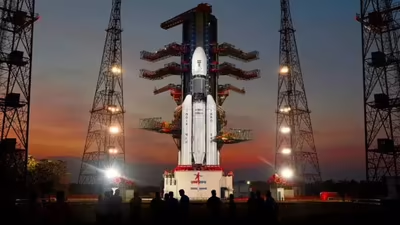
🇮🇳 India’s Lunar Ambitions Reach New Heights with Chandrayaan-4
In a major update from the Indian Space Research Organisation (ISRO), the launch window for the highly anticipated Chandrayaan-4 lunar mission has now been officially confirmed for December 2025. Building on the success of Chandrayaan-3, which made India the first country to land near the Moon’s south pole in 2023, this upcoming mission aims to take Indian lunar exploration to the next level — with the goal of returning lunar soil samples back to Earth.
This marks a bold step forward in India’s ambitious space program and positions ISRO alongside NASA, ESA, and CNSA (China) in pursuing sample return missions.
🧪 Mission Objective: Bringing Moon Samples Back to Earth
Chandrayaan-4 is India’s first lunar sample return mission and will attempt a robotic retrieval of regolith (lunar soil) from the Moon’s surface. If successful, India would become the fourth country in history to achieve this feat — after the USA, USSR, and China.
🚀 Key Goals:
- Perform precision landing on the Moon’s far side
- Deploy a robotic lander and rover system
- Collect and store lunar samples
- Return samples to Earth via a dedicated Earth Re-entry Module (ERM)
ISRO Chairman Dr. S. Somanath stated:
“Chandrayaan-4 is not just another mission — it’s India’s declaration that we are ready to lead in space science.”
🛰️ How the Mission Will Work: 4-Part Modular Architecture
The Chandrayaan-4 mission architecture is significantly more complex than its predecessor. It involves four separate modules:
- Propulsion Module (PM) – Takes the spacecraft to lunar orbit
- Lander Module (LM) – Performs soft landing on the Moon
- Ascent Module (AM) – Lifts off from the Moon with the sample
- Re-entry Module (ERM) – Returns the sample to Earth’s surface
This modular design reduces risk and mimics the proven success strategies of international space agencies.
🌕 Where on the Moon Will It Land?
Unlike Chandrayaan-3, which targeted the south pole, Chandrayaan-4 will attempt a landing in the Mare Orientale region on the Moon’s far side — a location never visited before by any Indian mission.
This unexplored zone is rich in volcanic basalt and ancient rock formations, making it ideal for scientific research related to the Moon’s geological past.
🔬 What Will Scientists Study from the Moon Samples?
The returned lunar samples will be analyzed by premier research labs such as:
- ISRO’s Space Science Lab, Bengaluru
- Indian Institute of Science (IISc), Bengaluru
- BARC and PRL (Physical Research Laboratory)
Key scientific questions include:
- Is there water locked in Moon minerals?
- How old is the Moon’s crust in different regions?
- Can we extract rare earth elements or Helium-3 for energy?
🧠 International Collaboration
ISRO has signed collaborative agreements with:
- JAXA (Japan) for data sharing and orbital support
- NASA for radiation shielding tech and re-entry support
- ESA (Europe) for mission control simulation
These global partnerships reflect India’s growing stature in space exploration and commitment to scientific diplomacy.
🛠️ Latest Mission Progress and Timeline
| Milestone | Status |
|---|---|
| Lander assembly | 85% complete |
| Sample return module | Testing phase |
| Re-entry shield | Passed thermal testing |
| Launch vehicle integration | Scheduled for Oct 2025 |
Launch Window: December 15–30, 2025
Launch Vehicle: LVM3 (GSLV Mk III)
Mission Duration: ~55 days (from launch to Earth sample return)
🌍 Why It Matters: India’s Place in Global Space Race
With this mission, India demonstrates it is no longer just participating in the global space race — it’s setting the pace.
Sample return missions are critical not just for science, but also for future Moon colonization and resource extraction.
This mission also directly supports India’s long-term goal of building a lunar space station by the 2030s.
📌 Conclusion: A Giant Leap for ISRO
Chandrayaan-4 is more than a space mission — it is a symbol of India’s scientific confidence and strategic vision. With bold goals, international partnerships, and cutting-edge tech, ISRO is preparing to etch India’s name deeper into the history of space exploration.
As we move closer to the launch window in December, the nation — and the world — will watch with excitement.
